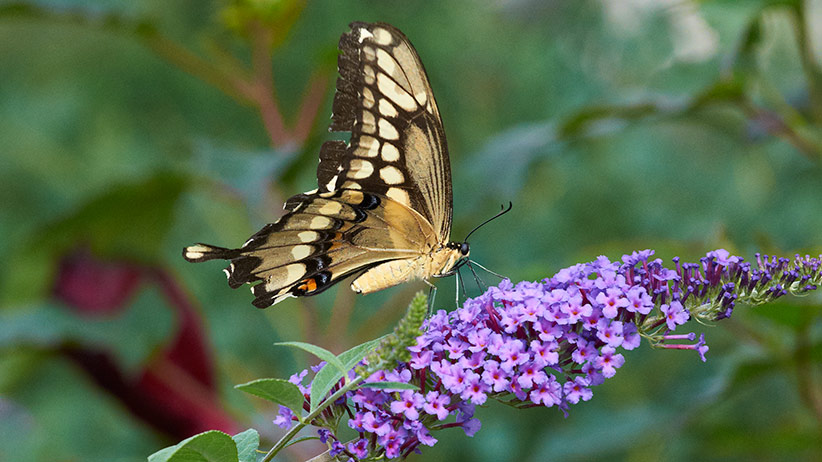Join our community
of garden lovers.
Sign up with your e-mail address to receive our latest offers,
competitions & local gardening tips
competitions & local gardening tips

Wildlife-friendly gardening is about making a haven for you, as well as for wildlife. By gardening sympathetically for wildlife, you’ll be rewarded by a truly natural outdoor space, where you can get in touch with the plants, animals and birds that make their home there.
Wildlife needs four things – food, water, shelter and a place to breed. By providing these things you will bring your garden to life.
Butterfly Gardens – Attract butterflies with nectar-rich flowers. Go for plants with simple flowers that make it easy for butterflies to get at the nectar. Plant in a sheltered sunny spot and don’t forget to provide food plants for caterpillars too.
Climbing Plants – Climbing plants on fences and walls make nesting and roosting sites for birds, and a haven for insects and small animals.
Go Organic – Encourage insect and slug-eating creatures instead of using pesticides. Gardeners’ friends include frogs, birds, lizards, spiders and small mammals like bats– all of which eat insects or slugs.
Hedges – Hedges provide living space and food for all sorts of wildlife. Good choices include Berberis and Pyracantha and Syzigium that produce lots of berries for the birds.
Ponds and Water features – Even a small pond can be home to an interesting range of wildlife, including damsel and dragonflies, and frogs. It could also become a feeding ground for birds and bats – the best natural garden pest controllers.
Native Trees and Shrubs – Favour native trees and Shrubs. Not only do they provide shelter for wildlife like birds, but they are also a source of food and nesting material for myriads of little critters.
Although each garden on its own may be small, together they form a patchwork linking urban green spaces with nature reserves and the wider countryside.
A small space is not a barrier to gardening for wildlife; small changes can have a real impact.
• Make imaginative use of walls, roofs and other structures. Even the smallest of ‘ponds’ are valuable – old sinks and buckets can teem with wildlife.
• Plant a window box or container with butterfly nectar plants such as lavender or marjoram.
• Make a small gravel garden planted with nectar-providing perennials such as scabious, or plant in spaces in a paved areas.
If we manage our gardens for wildlife, these creatures and many more will feel the benefits. So give it a go and watch as wildlife brings colour, movement and beauty to your garden.
Join us this Friday 11 March for our FREE online workshop on ‘On the Wild Side – Gardening for Wildlife’, with Garden Guru Sue Both.
Please use the following login details to join us at 11am sharp over Zoom:
Meeting ID: 854 3785 9022 Passcode: 400554
or use the following direct link: https://bit.ly/3JYdPtf
